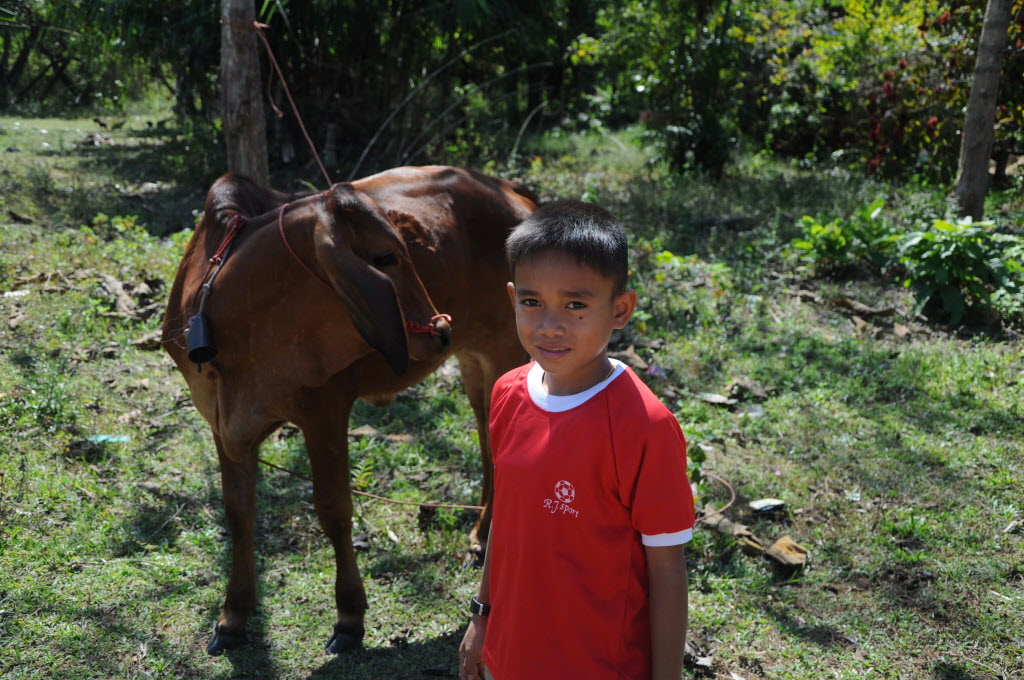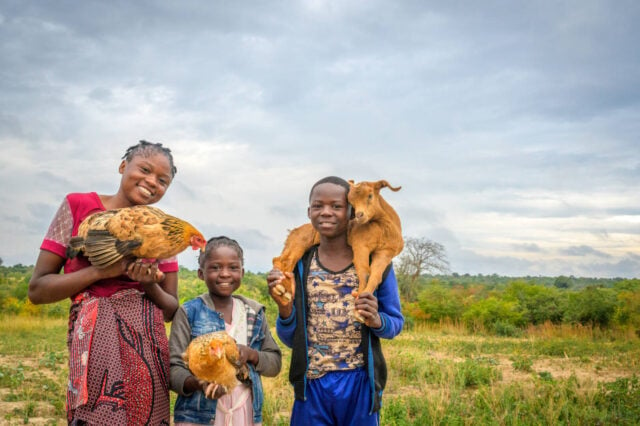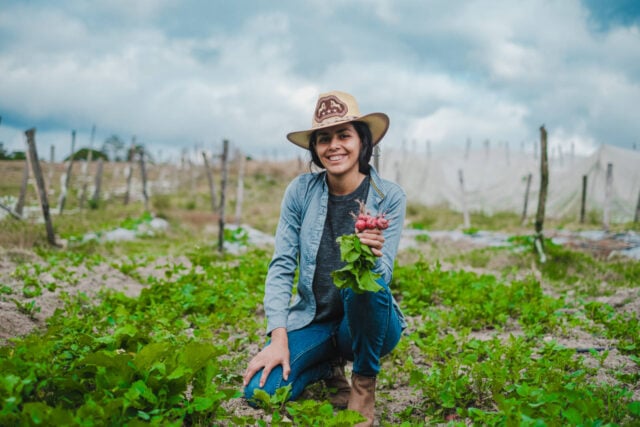“Come here, Emaunoi,” 8-year-old Pangpon Tongchan calls to a reddish brown calf, guiding the animal by pulling on the rope around its neck. But the calf stiffens, turning its head in the opposite direction until the rope is stretched taut, and Pangpon has to relax his grip. Seeing that Pangpon has to let up, Emaunoi turns its rear to the boy, then drops its head to nibble on grass as if nothing is amiss.
“The calf is obstinate,” says Lampoon Krongsap, Pangpon’s mother.
Gifts for a community
Emaunoi is the first calf to be born from a cow fund for 10 villages in Thailand’s Sirindhorn area, where Pangpon’s family lives. The calf’s mother is one of 75 cows provided to Sirindhorn through the World Vision Gift Catalog.
Lampoon says the cow is helpful beyond just the money they might earn from selling it.
“When we raise the cow, it helps us to save a lot of expenses,” she says. “We use cow dung as fertilizer for our rice farming and vegetable garden next to our house — instead of buying it. We have fresh vegetables to eat, and we don’t have to buy them.”
Pangpon’s village, Moo 8, received six cows from the area cow fund, which is managed by a community committee. Families with World Vision-sponsored children are able to breed and raise a cow until it gives birth. When the calf is 6 months old, the fund will give the mother cow to another family to use for breeding — until every family has its own cow.
Pangpon’s family was one of the first six families to receive the gift of a cow, and everyone was very excited about the opportunity.
“It is a new, young cow,” Lampoon says. “I was fearful that when I go touch it, it will kick. But when I began to raise the cow, it has never kicked.”
Caring for the cow
One of Pangpon’s favorite parts of the week is when he follows his grandmother to feed the cow. They gave Emaunoi’s mother grass and straw until she was fully grown and ready to be a mother.
Pangpon’s family arranged for artificial insemination of the cow, and after 280 days of pregnancy, it delivered a calf, which Pangpon named Emaunoi.
“I woke up in the morning, and the cow had already given birth,” Lampoon says. “I had no experience at all…luckily there was no problem. Emaunoi was very lovely in our eyes.”
Emaunoi never left its mother’s side from the first day until six months of age, when the mother was moved to another family.
“At first Emaunoi cried, seeking for its mother,” says Lampoon. “We had our Pangpon go play with the calf. As soon as he comes home from school, he will head straight to the cow pen. I told my son that this calf is his, and he must take good care of it.”
Security for the future
In two years, Pangpon’s family will have new calves coming from Emaunoi. At the same time, Pangpon’s skill in caring for cows will improve. Cows provide milk, but they can also be used to help a family financially.
“Cows are very important for northeast people, as they are like treasures,” says Supanat Sipikun, an economic project staff member in the area. “They can be converted into money during an emergency. One cow can be sold for 20,000 to 30,000 Baht (US$612 to $918). It can be more or less, depending on the cow’s size and owner’s satisfaction.”
Ways you can help
- Praise God that sponsorship helps not just children but whole communities. Pray that more children will receive sponsors. Pray too that more people will donate to the Gift Catalog so families in need can receive livestock that helps transform their lives.
- Give a dairy cow through the World Vision Gift Catalog or sponsor a child today. Animals have many benefits for families in need, and sponsorship helps provide for children as well as their communities.




